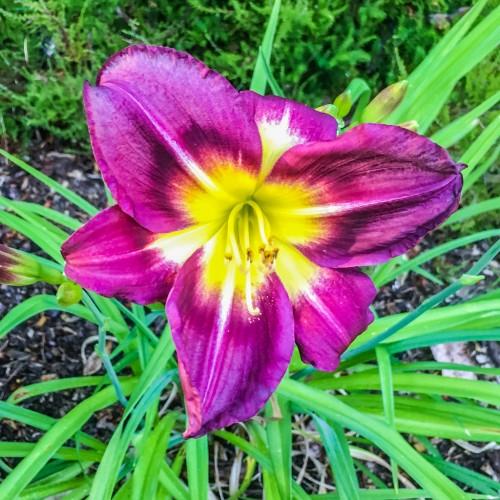
daylily
Hemerocallis 'Zuni Thunderbird'
Cycle:
Herbaceous Perennial
Watering:
Average
Hardiness Zone:
3 - 9
Flowers:
Flowers
Sun:
Full sun,part shade
Leaf:
Yes
Growth Rate:
High
Maintenance:
Low
Drought Tolerant:
Yes
Salt Tolerant:
Yes
Care Level:
Medium
watering
Water daylilies once every 7 to 10 days during the growing season. Make sure that the soil is completely saturated at each watering. Reduce watering to once per fortnight in periods of extreme heat or drought, and ensure the soil is not allowed to dry out completely. Allow the top 2 inches of soil to dry before re-watering, while avoiding long periods of soil dryness. After blooming, reduce watering to once a month to further conserve resources.
sunlight
Daylilies, including the Hemerocallis 'Zuni Thunderbird', need 6-8 hours of direct sunlight each day in order to thrive. Morning sun is best, as it begins to get hot in the afternoon, which can be too much for these plants. When grown in full sun, daylilies tend to produce more foliage, but fewer flowers. When grown in partial shade, daylilies may produce more flowers, but less foliage. Ideally, daylilies should have at least 4 hours of direct sunlight each day, especially during the spring and summer when blooming is at its peak. For optimal health, it is important to provide daylilies with adequate sunlight but to avoid direct afternoon sun in order to avoid sunburn or leaf scorch.
pruning
Pruning daylilies (Hemerocallis 'Zuni Thunderbird') is an important part of keeping the plants healthy. Proper timing and techniques will ensure that the daylily gets enough sun and air circulation and will encourage new growth. Pruning should be done in early spring, around the time of blooming. First, dead or damaged foliage and spent blooms should be cut away to make room for new growth. The foliage should then be cut back to a few inches above ground level. This kind of pruning will encourage air circulation and adequate sunlight to reach the center of the plant, as well as encourage the growth of fresh leaves. Pruning daylilies should be done at least once a year; however, if the foliage begins to look crowded, then pruning can be done more often, especially in the late summer.
